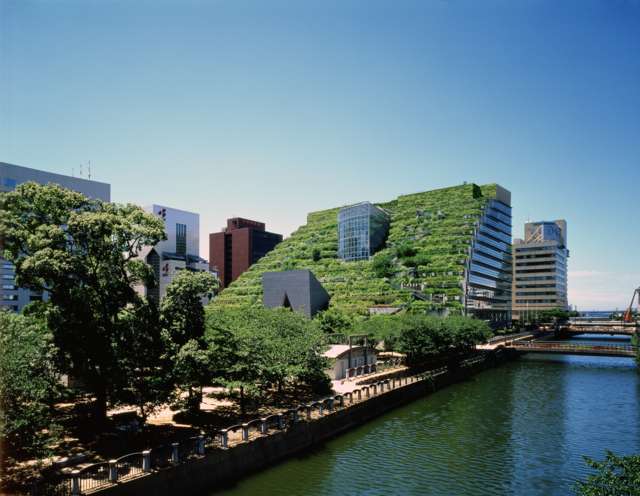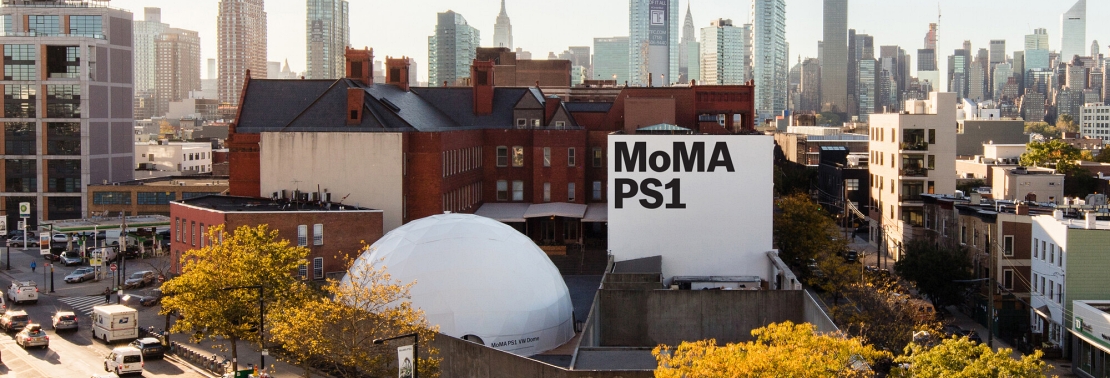Ferdinando Crespi of Ufficio Stampa writes:
The Emilio Ambasz Institute for the Joint Study of the Built and the Natural Environment Will Be Dedicated to Understanding the Interaction between Architecture and Ecology
New York, NY, USA – (December 3, 2020) – The Museum of Modern Art announced today the establishment of The Emilio Ambasz Institute for the Joint Study of the Built and the Natural Environment. The goals of the Institute, through a range of curatorial programs and research initiatives, are to foster dialogue, promote conversation, and facilitate research around the relationship between the built and the natural environment—making the interaction between architecture and ecology visible and accessible to Museum visitors and the wider public while highlighting the urgent need for an ecological recalibration. The Ambasz Institute will focus in particular on digital initiatives in order to both advance a global conversation on this crucial issue and to ensure that the Institute reaches a diverse audience. The Institute, to be located on MoMA’s Midtown Manhattan campus within the Department of Architecture and Design, will specifically study creative approaches to design at all scales of the built environment—buildings, cities, landscapes, and objects—in order to work toward an ecological future and environmental justice.
“We are immensely grateful to Emilio Ambasz for this generous gift. As a visionary in the field of green architecture, Emilio has been leading the charge on the issues of architecture and ecology for years. The Ambasz Institute will no doubt serve to further the important work that both he and The Museum of Modern Art have been doing in the field and I look forward to tackling these crucial issues.”
Glenn D. Lowry,
The David Rockefeller Director of The Museum of Modern Art.
The establishment of the Ambasz Institute offers an important opportunity for MoMA to continue its global leadership on sustainability issues while celebrating and cultivating a deeper public understanding of architecture and design. Research opportunities and a variety of programs including public lectures, conferences and symposia, many of them online, will bring together and prompt conversations amongst architects, designers, policy makers, social thinkers, historians, and the general public.
“Issues of ecology and the ongoing climate crisis are the most urgent challenges of our time, not only for architecture, but for humanity as a whole,” said Martino Stierli, The Philip Johnson Chief Curator of Architecture and Design at The Museum of Modern Art. “I am thrilled that with the new Ambasz Institute at MoMA, the Department of Architecture and Design will be uniquely positioned to shape discourse and foster necessary change in the field of design toward a more equitable and ecological future.” A Director of the Institute will be named after a search process.
Emilio Ambasz, an Honorary Member of the American Institute of Architects and an International Fellow of the Royal Institute of British Architects, has recently been granted his Fourth Compasso d’Oro to the Carrier as an innovative inventor of architectural and product designs. Ambasz is acknowledged as “the messiah of green architecture”(1) in James Wines’ book Green Architecture 1. Known for his interests and creations in the world of design, Ambasz invented the first ergonomic seating office chair, Vertebra, which is part of the collections at MoMA and The Metropolitan Museum of Art.
The Institute for Advanced Studies of the University of Bologna awarded him the 2014 Science Prize, and the University of Bologna will grant him an Honorary Laureate Degree in Architecture in an ex-professo ceremony on March 5, 2021.
 Ambasz has often stated: “The Western notion of Man’s creations as distinct and separate entities—in contrast with Nature—has exhausted its intellectual and ethical capital. An emerging man-made garden is overtaking the one we were originally given. We need to conceive of an architecture that stands as the embodiment of a pact of reconciliation between nature and building. We must create alternative models of the future proposing a better life to guide our actions if we do not wish to perpetuate present conditions. I believe that any architectural project not attempting to propose better modes of existence is unethical. This task may stagger the imagination and paralyze hope, but we cannot subtract ourselves from its pursuit.”
Ambasz has often stated: “The Western notion of Man’s creations as distinct and separate entities—in contrast with Nature—has exhausted its intellectual and ethical capital. An emerging man-made garden is overtaking the one we were originally given. We need to conceive of an architecture that stands as the embodiment of a pact of reconciliation between nature and building. We must create alternative models of the future proposing a better life to guide our actions if we do not wish to perpetuate present conditions. I believe that any architectural project not attempting to propose better modes of existence is unethical. This task may stagger the imagination and paralyze hope, but we cannot subtract ourselves from its pursuit.”
Emilio Ambasz’s multifaceted and deep-rooted relationship with The Museum of Modern Art spans more than five decades. As Curator of Design in the Museum’s Department of Architecture and Design from 1969 to 1976, he organized several groundbreaking exhibitions, including Italy: The New Domestic Landscape (1972); The Architecture of Luis Barragan (1974); and The Taxi Project: Realistic Solutions for Today (1976) and authored their accompanying publications. As a pioneering industrial designer and architect, Mr. Ambasz is also represented through more than 20 works in the Museum’s Architecture & Design and Media & Performance Art Collections. As the subject of Museum exhibitions, Mr. Ambasz was featured in Emilio Ambasz/Steven Holl: Architecture (1989) and In-Depth: The House of Spiritual Retreat by Emilio Ambasz (2005-2006), and his work has been included in several others, including The Changing of the Avant-Garde: Visionary Architectural Drawings from the Howard Gilman Collection (2002-2003) and 9 + 1 Ways of Being Political: 50 Years of Political Stances in Architecture and Urban Design (2012-2013).
Prior to the major gift to establish The Emilio Ambasz Institute at MoMA: For the Joint Study of the Built and the Natural Environment, both MoMA and MoMA PS1 have benefitted from Mr. Ambasz’s sustained patronage for more than forty years. He has been a member of MoMA’s International Council since 1978 and formerly served as a member of the Board of Directors of MoMA PS1 (2002-2006). Through the International Council, he has supported many important initiatives, including, most recently, The International Council Endowment for Exhibitions and Publications. He has also sponsored individual programs such as the 2015 exhibition Latin America in Construction: Architecture 1955–1980.

Emilio Ambasz. ACROS Fukuoka, Fukuoka City, Japan, 1990. Photo credit: I. Watanabe
According to the eminent Japanese architect Tadao Ando, in an essay published in Architecture & Nature / Design & Artifice (2016), Ambasz is considered the father, poet, and prophet of green architecture: “It was Emilio Ambasz who first called our attention to nature and to the environment at quite an early point in his career, and ever since, he has striven to achieve a fusion of nature and architecture […] By using nature on a massive scale, Ambasz presents us with the entire environment as a constellation from which architecture draws its essential being. There is, I believe, no prior example of nature governing architectural creation with such poetic power and haunting seduction.”(2)
(1) James Wines, Philip Jodido, Green Architecture (Köln ; New York : Taschen, 2000)
(2) Tadao Ando, Emilio Ambasz: Architecture & Nature / Design & Artifice (Milan: Electa Mondadori, 2016)
PRESS CONTACTS:
Meg Montgoris, meg_montgoris@moma.org
For downloadable high-resolution images, visit moma.org/press
Read more: The Museum of Modern Art Announces a Major Gift from Emilio Ambasz to Establish a Research Institute
 Greenroofs.comConnecting the Planet + Living Architecture
Greenroofs.comConnecting the Planet + Living Architecture





